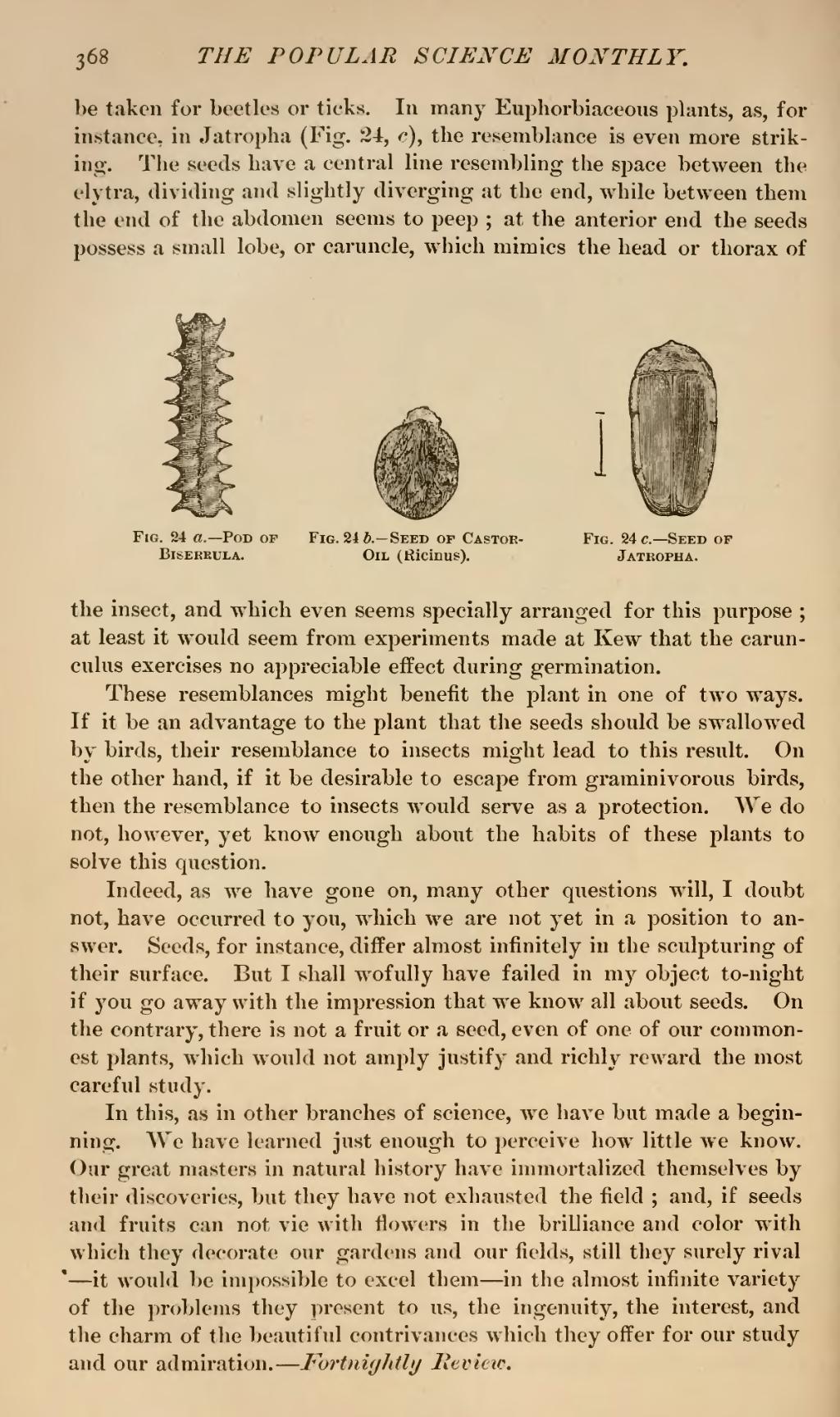be taken for beetles or ticks. In many Euphorbiaceous plants, as, for instance, in Jatropha (Fig. 24, c), the resemblance is even more striking. The seeds have a central line resembling the space between the elytra, diverging and slightly diverging at the end, while between them the end of the abdomen seems to peep; at the anterior end the seeds possess a small lobe, or caruncle, which mimics the head or thorax of

| Fig. 24 a.—Pod of Biserrula. | Fig. 24 b.—Seed of Castor-Oil (Ricinus). | Fig. 24 c.—Seed of Jatropha. |
the insect, and which even seems specially arranged for this purpose; at least it would seem from experiments made at Kew that the carunculus exercises no appreciable effect during germination.
These resemblances might benefit the plant in one of two ways. If it be an advantage to the plant that the seeds should be swallowed by birds, their resemblance to insects might lead to this result. On the other hand, if it be desirable to escape from graminivorous birds, then the resemblance to insects would serve as a protection. We do not, however, yet know enough about the habits of these plants to solve this question.
Indeed, as we have gone on, many other questions will, I doubt not, have occurred to you, which we are not yet in a position to answer. Seeds, for instance, differ almost infinitely in the sculpturing of their surface. But I shall woefully have failed in my object to-night if you go away with the impression that we know all about seeds. On the contrary, there is not a fruit or a seed, even of one of our commonest plants, which would not amply justify and richly reward the most careful study.
In this, as in other branches of science, we have but made a beginning. We have learned just enough to perceive how little we know. Our great masters in natural history have immortalized themselves by their discoveries, but they have not exhausted the field; and, if seeds and fruits can not vie with flowers in the brilliance and color with which they decorate our gardens and our fields, still they surely rival—it would be impossible to excel them—in the almost infinite variety of the problems they present to us, the ingenuity, the interest, and the charm of the beautiful contrivances which they offer for our study and our admiration.—Forthnightly Review.
